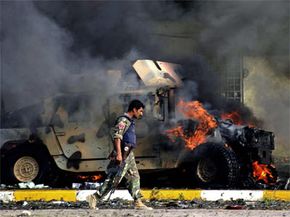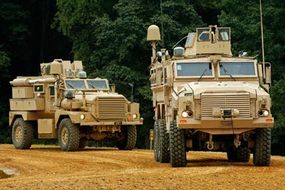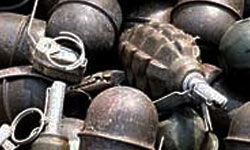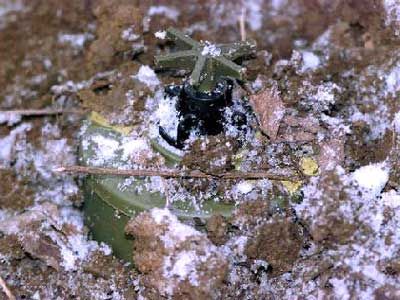A neighborhood in Iraq reverberates with a deafening explosion. A military convoy has been hit by a roadside bomb. The explosion has left a crater in its wake, ripped apart vehicles and injured the soldiers riding within them. In a nearby marketplace, a suicide bomber blows himself up, maiming and killing scores of nearby civilians. These violent scenes have played out repeatedly in Iraq and Afghanistan since combat operations began there in the early 21st century.
It wasn't always this way. In the beginning of the Iraq war, U.S. soldiers were injured mainly from gunfire, mortars and grenades. The injuries are wrought now by a different source. The preferred weapon of insurgents and terrorists has become an improvised explosive device, or IED. You might call it a homemade bomb or a booby trap. Whatever you call it, an IED is relatively simple to make, easily hidden and very destructive.
Advertisement
Soldiers, civilians, as well as paramilitary and terrorist groups, have been building and detonating homemade bombs for years.
- During the Vietnam War, the Viet Cong hid IEDs in soda cans because they observed that U.S. soldiers liked to kick empty cans while marching along the roads [source: GlobalSecurity.org].
- The Irish Republican Army used them in the 1960s and 1970s during its struggles with the British in Northern Ireland.
- In 1996, Eric Rudolph made a pipe bomb (IED) and set if off in Atlanta's Centennial Olympic Park during the Summer Olympics. One person died and more than 100 people were injured in the attack.
You could fill volumes with all the IED attacks that have occurred within the last decade. That's because IEDs can be an effective strategy when facing a superior or more technological military force. Guerilla fighters, rebels and terrorists employ the weapons mainly to harass the military and to terrorize civilians and governments. Their use shows no signs of abating.
In fact, roadside bombs, which are typically IEDs, have reigned as the No. 1 killer of U.S. troops in Iraq, although the number of IED casualties dropped substantially in August 2008 [source: McMichael]. In Afghanistan, however, IED attacks are up 50 percent in 2008 [source: NPR]. No wonder the U.S. military is actively researching countermeasures.
This article will explore the destructive world of IEDs -- how they're made and detonated, why they're so prevalent, how they injure people and how to protect people from them.
Up next: a look inside the deadly device.
Advertisement






